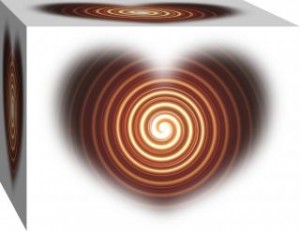PTSD Diagnosis: What To Do Next
Before your PTSD diagnosis, when you’re struggling with PTSD symptoms, you know exactly what to do: You have to figure out what’s wrong.
If you’re proactive about chasing down answers and fortunate enough to find a professional who recognizes the signs of PTSD and diagnoses you with posttraumatic stress disorder, your next challenge is deciding how to approach recovery.
Since there is no single way to heal, it’s up to you to know your options.
Overview of PTSD Treatment Approaches
 Basically, there are two general categories for PTSD treatment modalities: traditional and alternative.
Basically, there are two general categories for PTSD treatment modalities: traditional and alternative.
Traditional treatment modalities refers to those treatments designed and implemented in a clinical setting. These approaches have been sanctified by psychological institutions and associations and have research results that qualify their success. Generally they are geared toward working in the cognitive, conscious mind. Popular options include:
Cognitive Behavior Therapy focuses on the concept that how you think about things affects how you feel emotionally. If you change how you think, then you change how you feel; ultimately, this changes your behavior.
Eye Movement Desensitization and Reprocessing is different than the other traditional forms of therapy in that it is not necessary to talk in detail about the event. By stimulating the information processing system, the memory is “digested” and takes its place in the past.
Talk Therapy focuses on speaking on the conscious level about trauma. Psychotherapy may utilize insight, persuasion, suggestion, reassurance, and instruction to help survivors cope with and overcome PTSD symptoms.
Prolonged Exposure Therapy operates on the principle that you get used to things that are just annoying and not truly dangerous. This is called ‘habituation’. Exposure therapy asks patients to confront – in a safe way – the very situations that make them feel most afraid.
Alternative treatment modalities refer to those processes that have been developed outside of the clinical forum. Lacking support from research studies these modalities usually remain outside the realm of official sanction even though their results are often enormously positive and long lasting. Generally these approaches are geared toward somatic, energy and subconscious mind effects. Popular options include:
Energy Processing Therapy works with the energy median pathways in your body, also used in acupuncture, which can become imbalanced from the impact of a traumatic event. Rebalancing the energy system as you think of the traumatic event can change your emotions and thus your behaviors. Popular energy processing techniques include Emotional Freedom Technique and Thought Field Therapy.
Hypnotherapy also focuses on rewiring the brain to change perceptions on the subconscious level. Using the power of suggestion, plus processing formulas, this form of PTSD treatment focuses on the present and future rather than on rehashing the past.
Neuro-Linguistic Programming techniques sever and recreate neural pathways by using language to reframe, redirect and reorganize the coding of experience in the brain. Like hypnotherapy, NLP focuses on the present and future rather than the past.
Somatic Experiencing® is a body-awareness approach to trauma based upon the understanding that we have an innate ability to overcome the effects of trauma. Through a method of body processing SE® restores self-regulation, and returns a sense of aliveness, relaxation and wholeness to trauma survivors.
This is just a short, get-you-started list and is by no means inclusive of all recovery options. PTSD recovery is a process of discovery and exploration.
Michele is the author of Your Life After Trauma: Powerful Practices to Reclaim Your Identity. Connect with her on Google+, LinkedIn, Facebook, Twitter and her website, HealMyPTSD.com.
APA Reference
Rosenthal, M.
(2012, December 26). PTSD Diagnosis: What To Do Next, HealthyPlace. Retrieved
on 2026, January 2 from https://www.healthyplace.com/blogs/traumaptsdblog/2012/12/ptsd-diagnosis-what-to-do-next